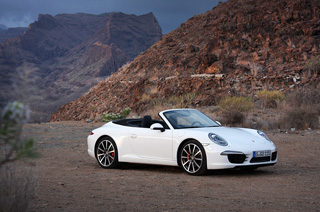Test drive Porsche 911 Carrera 991 since 2012
The cleverest
The test drive of the all-wheel drive modification Porsche 911.Caramel-sweet Austrian landscapes, familiar from advertising chocolate and dairy products, are noticeably faded in the fall. Thick fogs are lowered on green alpine tilts covering trees, houses and mountain roads. Raw, uncomfortable and treacherously slippery. Perhaps you can’t even imagine more suitable conditions for the test of all -wheel drive modifications Porsche 911 in the conditions of refined Europe.
A full -wheel drive 911 in Europe?
Let's do without irony: for all -wheel drive modifications nine hundred eleventh accounts for a third of world sales. In Austria, Switzerland, in the mountainous regions of Italy or France, all -wheel drive cars are a real need. That is why a sportkup with a ski trunk on the roof on winter alpine roads is found almost as often as in Russia Japanese SUVs.
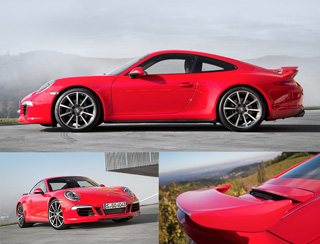
Instead of an active rear spoiler, the buyer of the 911th can order a stationary, in the style of the future version of Turbo (in the photo), or in the Duck Tail style
In the technical plan, the all -wheel drive Porsche 911 of the new family 991 is not much different from the previous generation with index 997: the front axle drive here is carried out by the same multi -disc clowing with electronic control, capable of throwing up to 100 percent of the torque to any of the axes for about 100 milliseconds. However, now the transmission has received a reconfigured control electronics, closely tied to a stabilization system. It is smarter and capable of more accurately determined the condition of the coating under the wheels. And even in the usual state of the coupling, it is slightly preheated, transmitting a slight fraction of the torque on the front wheels this is done so that it can work faster when changing road conditions.
For both versions 911 with Carrera 4 and Carrera 4 S, the rear differential locks are still available: for modifying with mechanical transmission, the rear display will also be completely mechanical, and for the version with the PDK robot with electronic control.
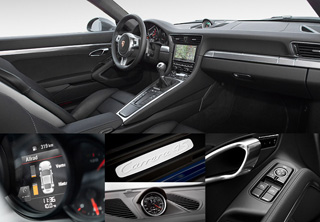
No changes in the interior of all -wheel drive 911 Carrera 4 and 4s occurred. Only original linings on the thresholds were added, and on the digital display on the dashboard, you can now display information about the distribution of the moment between the axes (in the photo left below)
What else?
Compared to the rear-wheel drive 911, the versions with index 4 in the name were heavier by an average of half a center due to a pair of additional drive shafts and the couplings of the front-wheel drive. Moreover, the whole increase was mainly on the front axle, which slightly changed the weightlift in its favor. Finally, according to tradition, all all -wheel drive versions received a body with 44 millimeters with wheeled arches, and the track of the car increased by 42 millimeters (Carrera 4 version) and 36 millimeters (Carrera 4s), respectively.
There is another very simple way to distinguish new modifications: on the LED strip of stop-signals that connect the rear lights.
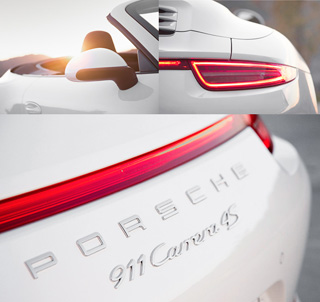
Simultaneously with the advent of all-wheel drive versions, the model range of the 911th was replenished with new options, such as a glass hatch, an adaptive cruise control with a full stop function, as well as adaptive headlights and new front seats.
And also Carrera 4 and Carrera 4s have become a little slower than their monopoly options. The acceleration time from zero to one hundred kilometers per hour increased by 0.1 seconds: up to 4.9 seconds in a 350-horsepower modification with a motor of 3.4 and mechanics and up to 4.1 seconds in a top 400-horsepower version with a PDK and a Sport Chrono package. The maximum speed decreased by four kilometers per hour, so even the most powerful version with all -wheel drive is now not able to overcome a mark of 300 kilometers per hour. On the one hand, this difference is very insignificant and reminds only of the increased mass of cars, and on the other, it also speaks of how effective the usual, rear-wheel drive 911th!
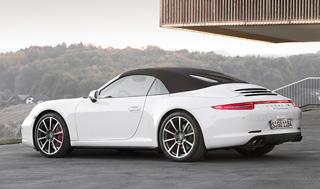
Buyers of all-wheel drive 911s are available the same set of driver options as for versions with the drive only to the rear axle: composite brakes, the PASM mechatron chassis with 20 millimeters suspension and active stabilizers. Moreover, all this can be ordered both on the compartment and the version with the body convertible
The nuances of the controllability of the all-wheel drive 911th were on the example of the basic Carrera 4 compartment with a mechanical gearbox: the most evil Carrera 4s with PDK and ceramic brakes were seized by German journalists. But it was possible to try in the case another novelty available only on versions with mechanics automatic extension when switching to a low gear, which is included in the Sport Chrono package. Such a thing appeared a few years ago on the Japanese compartment Nissan 370z, and now it will be on Porsche cars.
After a dozen hours spent on the Nizhny Novgorod ring with the Porsche school at the wheel of a 400-horsepower compartment with PDK, the initial version of the compartment seems simple, like an ax, and at the same time incredibly mechanical. Long-flowing and not the lightest clutch pedal, a rough roar of a motor somewhere behind, a tall lever of a seven-speed gearbox. However, it is pleasant to climb the steps with a short -handed handle, if only for the sake of juicy extensions that electronics are made by the driver.
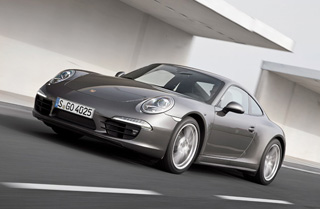
The declared fuel consumption of all-wheel drive modifications of the 911th is approximately three percent. However, they have four liters more
On the wet road, the presence of an electronic wizard, which levels the engine speed when switching down, is very useful. Short braking before a running turn, a lever impact on itself, with the fourth to the third gear, a sonorous r-rhleep! Behind the back, movement of the steering wheel and again you can open the gas!
Automatic extension occurs with absolute accuracy, avoiding even the slightest imbalance of the car when changing the steps.
The driver at this time can focus on the steering and digestion of information coming from the front wheels, instead of learning a gymnastic trick toe-five. Moreover, there is something to digest. The steering wheel with a reconfigured electric power steering to 911 Carrera 4 is literally oozing information!
While the front tires confidently hold on to the asphalt everything goes well. A full -wheel drive compartment under the traction is screwed into a turn with an rear -wheel drive excitement, accelerating at the exit with a slight glide. But if you get close to the limit of the adhesive properties of the tires on a wet coating and openly open the gas, then the front axle loaded with the moment can slip and drive past the trajectory. And this, I must admit, invigorates! So much so that the margin of the hook on the front axle on a narrow wet road has to be monitored very carefully, simultaneously recalling the smooth operation skills of gas and brake pedals.
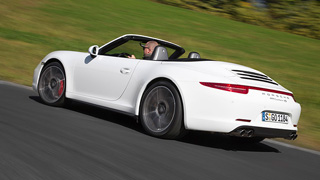
A full -wheel drive convertible - these are three pleasures in one: luxurious body, relative practicality and all -welcome thanks to four leading wheels
But on dry asphalt, the differences between the rear -wheel drive and all -wheel drive versions are barely noticeable. The insignificant difference in the mass is leveled by the expanded ruts, thanks to which Carrera 4 is just as stable in corners that the lighter version 911 Carrera 2. Thanks to the complete drive, it allows you to open gas at the output a little earlier, and the electronics that controls the multi-disc clutture, which controls the output, He tries to direct additional traction to the front wheels in order to use the brake moment of the engine to the maximum. But this is a little bit of the whole buzz!
At the same time, a more powerful, 400-horsepower Carrera 4s, in theory, should be even more effective. Here, all the electronics are all -wheel drive, the robot, the stabilization system and the mechatron chassis works as a very smart, coordinated mechanism.
At least, on a wet serpentine, a more intelligent compartment with a robotic transmission, lowered by 20 millimeters with a suspension, active stabilizers, wide 20-inch wheels and an electronic rear differential lock, left our basic modification on chubby 19-inch tires like a standing one!

At the initial modification of the Porsche 911 Carrera 4, 19-inch wheels with Goodyear Eagle F1 asymmetric tires are installed, while the top Carrera 4s are equipped with 20-inch pirelli p zero tires
Full -wheel drive - nnada?
For those who are going to travel to Porsche 911 every day, all year round more than not. A more confident dynamics on an unstable coating, especially in winter, a kind of all -wheel drive fan and comparable to the rear -wheel drive modifications of the dynamics on dry asphalt. And for those who are only transplanted to the rear-engine 911th, Carrera with index 4 will probably also appear a little more understandable in control, thanks to another weight and loaded front wheels.
The main drawback of all -wheel drive modifications is their price. The surcharge for an additional pair of leading wheels in Russia will be approximately 450-500 thousand rubles, depending on the modification. For a robotic transmission will have to be given about 160 thousand rubles. And this is a lot, even taking into account the fact that in return you get the most intelligent and most practical Porsche 911 of our time.
4,881,000 rubles - the base price for an all -wheel drive Porsche 911 Carrera 4 with mechanics in Russia. The top Carrera 4s C PDK costs from 5.749 million rubles.
Source: Motor magazine [November 2012]



